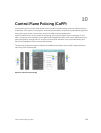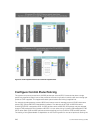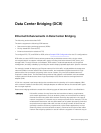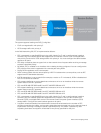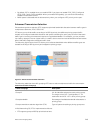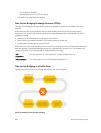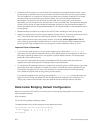
transport protocols (for example, TCP) for reliable data transmission with the
associated cost of greater processing overhead and performance impact.
Storage traffic Storage traffic based on Fibre Channel media uses the Small Computer System
Interface (SCSI) protocol for data transfer. This traffic typically consists of large data
packets with a payload of 2K bytes that cannot recover from frame loss. To
successfully transport storage traffic, data center Ethernet must provide no-drop
service with lossless links.
InterProcess
Communicatio
n (IPC) traffic
InterProcess Communication (IPC) traffic within high-performance computing
clusters to share information. Server traffic is extremely sensitive to latency
requirements.
To ensure lossless delivery and latency-sensitive scheduling of storage and service traffic and I/O
convergence of LAN, storage, and server traffic over a unified fabric, IEEE data center bridging adds the
following extensions to a classical Ethernet network:
• 802.1Qbb — Priority-based Flow Control (PFC)
• 802.1Qaz — Enhanced Transmission Selection (ETS)
• 802.1Qau — Congestion Notification
• Data Center Bridging Exchange (DCBx) protocol
NOTE: Dell Networking OS supports only the PFC, ETS, and DCBx features in data center bridging.
Priority-Based Flow Control
In a data center network, priority-based flow control (PFC) manages large bursts of one traffic type in
multiprotocol links so that it does not affect other traffic types and no frames are lost due to congestion.
When PFC detects congestion on a queue for a specified priority, it sends a pause frame for the 802.1p
priority traffic to the transmitting device. In this way, PFC ensures that PFC-enabled priority traffic is not
dropped by the switch.
PFC enhances the existing 802.3x pause and 802.1p priority capabilities to enable flow control based on
802.1p priorities (classes of service). Instead of stopping all traffic on a link (as performed by the
traditional Ethernet pause mechanism), PFC pauses traffic on a link according to the 802.1p priority set on
a traffic type. You can create lossless flows for storage and server traffic while allowing for loss in case of
LAN traffic congestion on the same physical interface.
The following illustration shows how PFC handles traffic congestion by pausing the transmission of
incoming traffic with dot1p priority 4.
Data Center Bridging (DCB)
247



